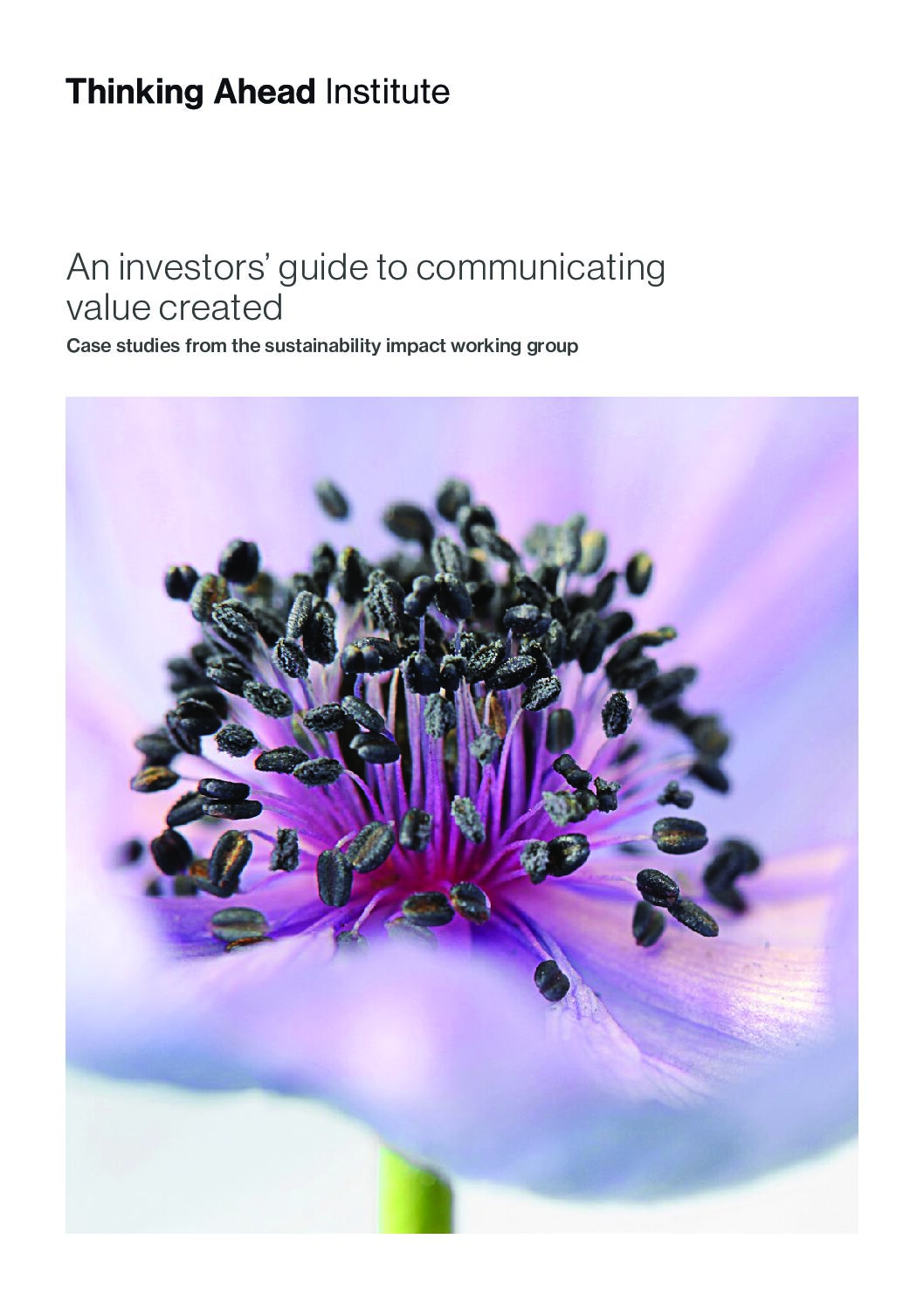Every investment decision we make has an impact on the economy and therefore wider society. We believe that the framing of investment and fiduciary duty has moved from the simple optimisation of risk and return to include a third dimension of understanding, measuring and communicating impact. Building on the Institute’s value-creation work of 2018 and featuring case studies from seven global investment organisations, this paper provides practical guidelines to help organisations define purpose and document beliefs; measure impact; and communicate the value created for stakeholders.
Watch members from the sustainability impact working group
Although there are clear challenges in the world right now, sustainability remains a key focus for the Institute and our members. Those involved in the working group submitted footage from around the world, to share why sustainable investing is so important for their organisations, and their experiences of working closely with the Thinking Ahead Institute.
The 5 practical steps outlined for creating and measuring value
Step 1: Define your purpose; document your beliefs
- Organisations should clearly document their mission, purpose, values and investment objectives, and should document a set of beliefs that will guide them in their actions
- Robust sustainability beliefs are central to successful long-term outcomes and provide a solid foundation for an accountable, methodical investment process that considers multiple stakeholders
Step 2: Draw your value creation boundaries
- An organisation’s purpose and resultant activities, either implicitly or explicitly, create a boundary between those stakeholder groups which benefit from value created, and those for whom value is destroyed
- Stakeholders will have their own perspectives on how an organisation’s resources should be used and transformed. This signals the need for organisations to develop strategies that focus on anticipating, understanding and responding to stakeholder needs and the development of long-term relationships
Step 3: Measure your impact
- Every investor should make strides towards measuring the impact of their investment activities authentically and on the widest range of stakeholders
- We need to be wary of the gap between our positive intentions for a more sustainable economy and our ability to create it (intentionality-additionality gap). To increase our industry’s sphere of influence we need to engage with corporations and public policy, introducing ‘change-the-system’ thinking and actions
Step 4: Understand the value created
- Many investors focus on the measurement of impact but stop short when translating this into a narrative on how value is created (or destroyed) for stakeholder groups
- Deeping our understanding of value creation not only helps investors improve the alignment of decision-making with organisational goals, but also improves engagement and communication with stakeholders
Step 5: Communicate!
- Critical to successful communication are the themes of authenticity, intentionality and transparency. This is an evolving area and communication should reflect this and adapt over time
- A comprehensive articulation of value creation should acknowledge:
(i) the monetary and non-monetary value created
(ii) which stakeholders value is created (and destroyed) for
(iii) how value accrues to different stakeholders over multiple time horizons
(iv) how much value is at risk of being reversed in the future


